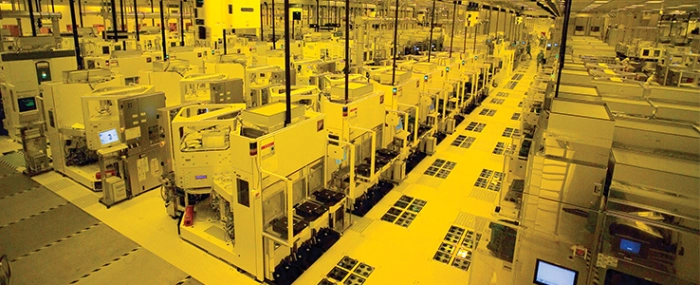
Foundries will see steeper revenue drop in 4Q22
As orders for consumer semiconductor components undergo larger downward corrections foundries will see a steeper revenue drop in 4Q22, says TrendForce.
Inventory consumption in the consumer electronics market has been slower than expected, so a turnaround is unlikely to happen in the near term. As the slump continues, foundry orders for chips used in consumer electronics will be revised downward more sharply. This, in turn, will have an impact on wafer shipments and capacity utilisation rates at foundries.
TrendForce predicts that the majority of the global top 10 foundries will report either a smaller growth or a drop in revenue in 4Q22. Even the dominant industry leader TSMC will eventually be impacted by this wave of order adjustments as well. Although TSMC may experience a greater decline in 7/6nm orders than expected, 5/4nm orders will continue to support its revenue creation. TSMC's revenue for 4Q22 will not experience a QoQ reduction, although it is expected to remain largely unchanged from 3Q22, according to TrendForce.
Regarding foundries’ capacity utilisation in 4Q22, Trendforce expects that UMC will continue to concentrate on modifying its product mix in order to devote greater production capacity to chips used in industrial equipment and automotive electronics. However, due to the increased quantity of idled production capacity brought on by the decreased orders for the chips used in consumer electronics, UMC's capacity utilisation rate will still decrease by 10 percentage points.
GlobalFoundries isn't expected to be able to maintain its capacity utilisation rate either as it has not secured enough long-term agreements for 8-inch wafer foundry. Turning to HuaHong, its subsidiary HLMC is expected to begin to see a slide in the capacity utilisation rate of its 55nm node that manufactures the MCUs, Wi-Fi chips, and CMOS image sensors used in consumer electronics. Likewise, PSMC’s capacity utilization rates for 8- and 12-inch wafer foundry will retreat to 60~65% and 70~75% respectively because of the ongoing order corrections related to CMOS image sensors, DDIs, and other logic chips, says TrendForce.
The capacity utilization rate for VIS will also drop to about 70%. Last but not least, Nexchip is at risk of seeing downwards corrections of incoming orders for driver ICs and other circuits used in consumer electronics (e.g., PMICs and CMOS image sensors). At the same time, the foundry is constrained from adjusting its product mix because its other process technologies have yet to reach the mass production standard. These variables will lead to Nexchip's capacity utilisation rate dropping to 50–55%.
